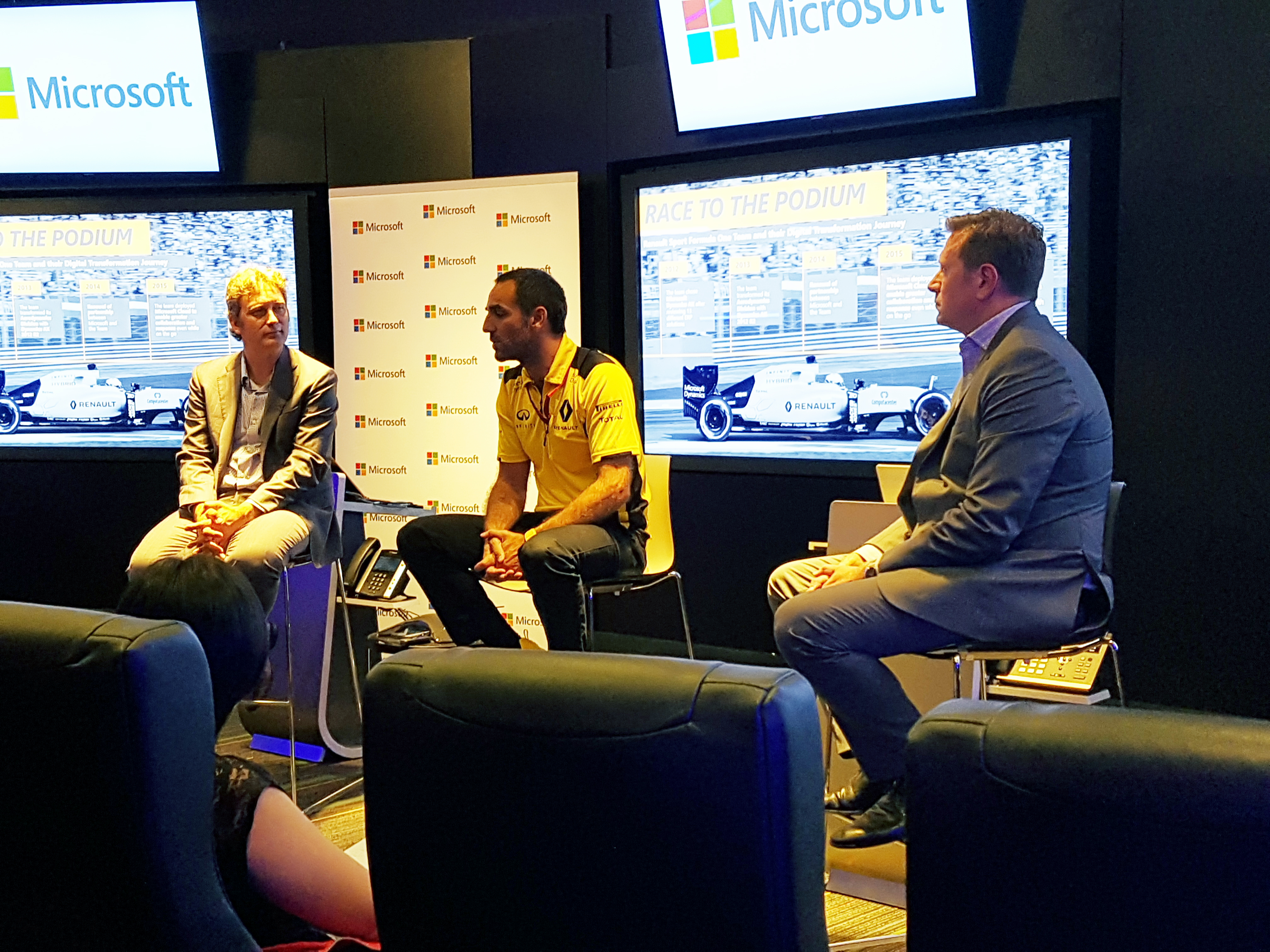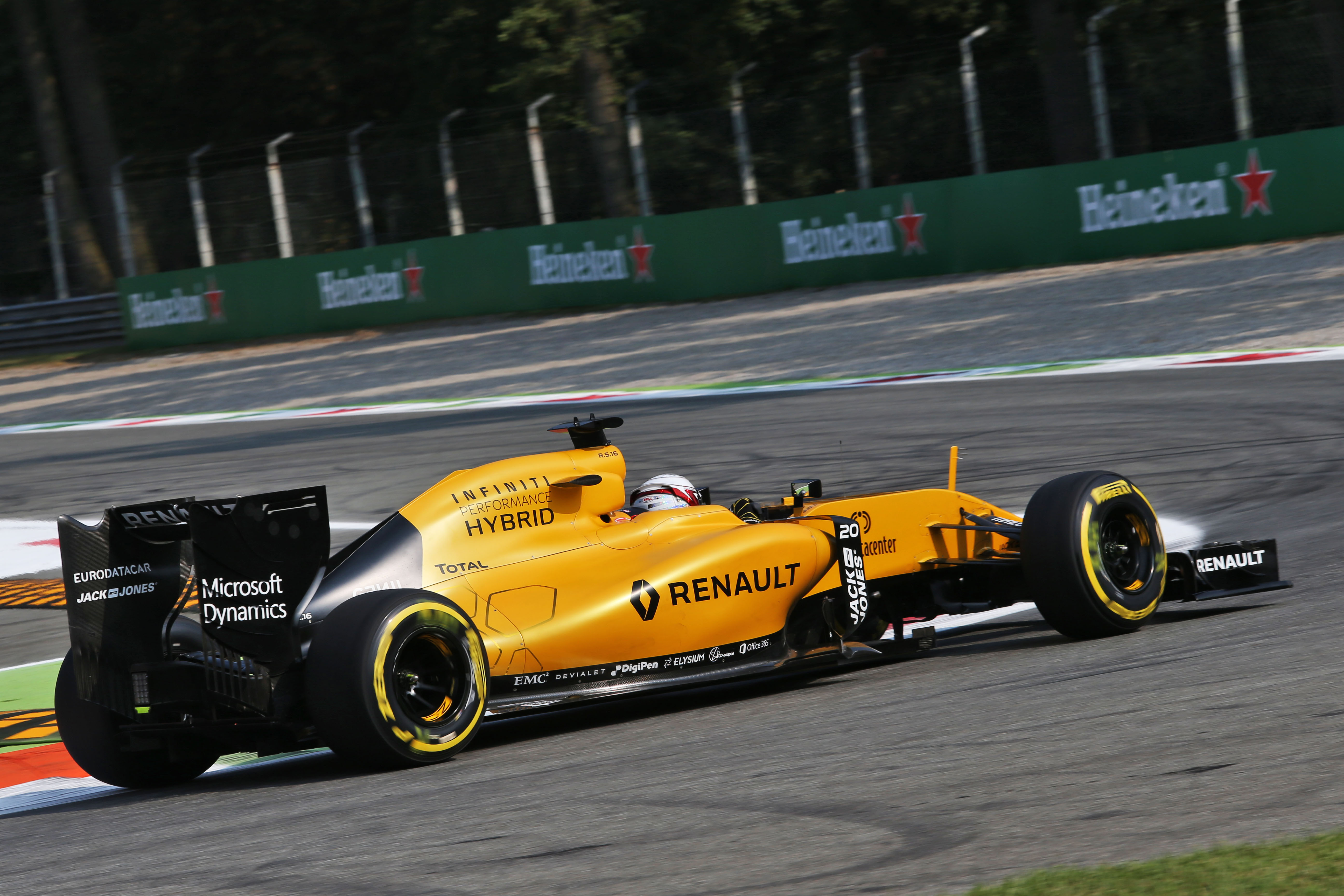In our fifth year of partnership with Renault Sport Formula One Team, we take a look back at how technology is driving transformation in a hyper-paced industry
By Pepijn Richter, Director, Worldwide Product Marketing ERP, Microsoft Dynamics
Behind the glitz and the glamor, Formula One is undoubtedly one of the most technologically demanding sports in the world. In fact, what often gets overlooked is the impact that technology and innovation have in ensuring that the drivers’ skills on track are enhanced to push the boundaries of success.
Being in the business of speed, the technical benchmarks set in Formula One are really high. Teams are required to build cars that move at astonishing velocities of more than 220 miles per hour while racing for their place at the podium. And with twenty-one races conducted over a season, car configurations and new parts need to be delivered at equally incredible speeds in order for teams to stay in the race.
The Renault Sport Formula One Team (formerly Lotus F1 Team) has the added pressure of not having the largest budget in the business. Their story goes beyond the guts and glory of Formula One racing, but is also a classic story about astute business and technology efficiency right for everyone in the team, including their talented drivers, expert engineers, technicians, skilled mechanics, marketing and the production staff who have made their transformation possible.
Getting on the Right Track with Technology
For the uninitiated, Formula One is heading for one of the biggest overhauls of its rules next year, when new technical regulations will warrant cars to be wider and run on wider tires.[1] This means that teams will need to substantially re-think their designs to meet the new requirements – which is even more challenging as there will be little evolution from previous parts.
And in a sport where time is crucial, an organization like Renault Sport Formula One Team cannot afford to operate reactively and must ensure design and production resources are optimized for maximum efficiency. As such, investments are made upon technology which can help automate manual processes, providing visibility and transparency across teams, while reducing time in development. All of these contribute to the building of a well-oiled and well run race team in a gruelling schedule.
Given the challenging nature of the sport, productivity is ultra-critical for the racing teams. The path toward attaining this goal depends on a solid and competent collaboration model. Relying on the right technology partners and collaborative tools means racing teams are better equipped to further interpret real-time data, to make the necessary strategic decisions, and deliver a podium finish.
Against such a scenario, technology partners like Microsoft not only bring fresh perspectives and keep the wheel of innovation running, they can also bring outside capabilities that help infuse advanced and smart technologies into their current development processes. In fact, technology has become key in helping teams gain fractions of seconds that mean the difference between winning or losing on the track.
Technology is Driving Digital Transformation at Renault Sport
When we look at how companies are urgently transforming in a digital world in order to gain competitive advantages, Renault Sport Formula One Team carry this notion to the extreme. In fact, its information technology team has always laid emphasis on innovation by employing the absolute cutting edge in cloud, big data, Internet of things and analytics.
Since partnering with Microsoft, it has been able to vastly reduce the amount of time it takes to bring parts from idea to car — whether it is designing, wind tunnelling or 3D modeling. Along with employing the right systems and tackling change management, Renault Sport Formula One Team has been able to leverage technology to break down silos between teams to maintain its fast moving and agile culture.

1. Responding to the Need for Speed with Technology
Speed is key for all racing teams, whether on the track or behind the scenes. Added to the complexity is how each car component has a limited lifespan due to both fatigue and an innovation cycle that produces better components on a race by race basis, in an agile and responsive manner This is exceptionally crucial in a sport where every second counts.
For Renault Sport Formula One Team, being able to make changes at an incredible speed is a clear goal, where parts production often must deliver within 24 hours. Changes and evolution in the sport of Formula 1 can happen just as fast as the cars move, making it even more challenging for organizations to plan a systems upgrade. As such, teams need technology that supports changes at a moment’s notice and enhances throughput capabilities. Race engineers need to have all the pertinent race data at their fingertips, rather than just rely on gut feeling and instinct to make engineering decisions.
2. Embracing Data in its Race to the Podium
Formula One cars have a complex network of around 200 on-car sensors and two or more sensors can be matched to form around 20,000 virtual channels. As a result, during tests and races, each race car relays an enormous amount of data back to the team. The collected data are then monitored to automate predictions, and based on historical data and current conditions, assist the team to further improvisation. For example, data from these sensors can help create real time alerts on tire degradation, temperature, airflow and aerodynamics, the travel on the throttle, brake and oil temperature, minute movements inside the gear box, and track conditions, all aimed at gaining a competitive advantage on the track. This is currently being enabled by Azure Machine Learning suite, where the team can integrate all these data into a simulator that can better model how the car will perform in different situations, ultimately improving race performance.
Today, Renault Sport Formula One Team relies on Microsoft Dynamics AX in the cloud to aid in collecting and displaying car and race data to make up-to-the-minute modifications, all while keeping costs low and team members organized.
3. Breaking down silos with Technology
It is crucial for team members to be able to get their hands on the information they need, and input it from anywhere using mobile devices, so business insights are up-to-the-minute and visible across the board. By leveraging Microsoft Cloud solutions, which includes Azure Machine Learning, Microsoft Dynamics CRM, Dynamics AX, as well as Power BI, the Renault Sport Formula One Team is enabling itself to gain key insights on the dot, which drive productivity.
In my time working with the Team, I’m honored to be able to have witnessed its digital transformation where Team Principals, race drivers, engineers and even marketing staff worked relentlessly to ensure a credible campaign at every race. And as the Team works towards improving its timing in one of the most gruelling races in the calendar, Microsoft will continue to support its campaign through delivering solutions that ensure performance on and off tracks.

[1] http://www.formula1.com/en/latest/technical/2016/1/future-vision—the-f1-car–2017-style.html





